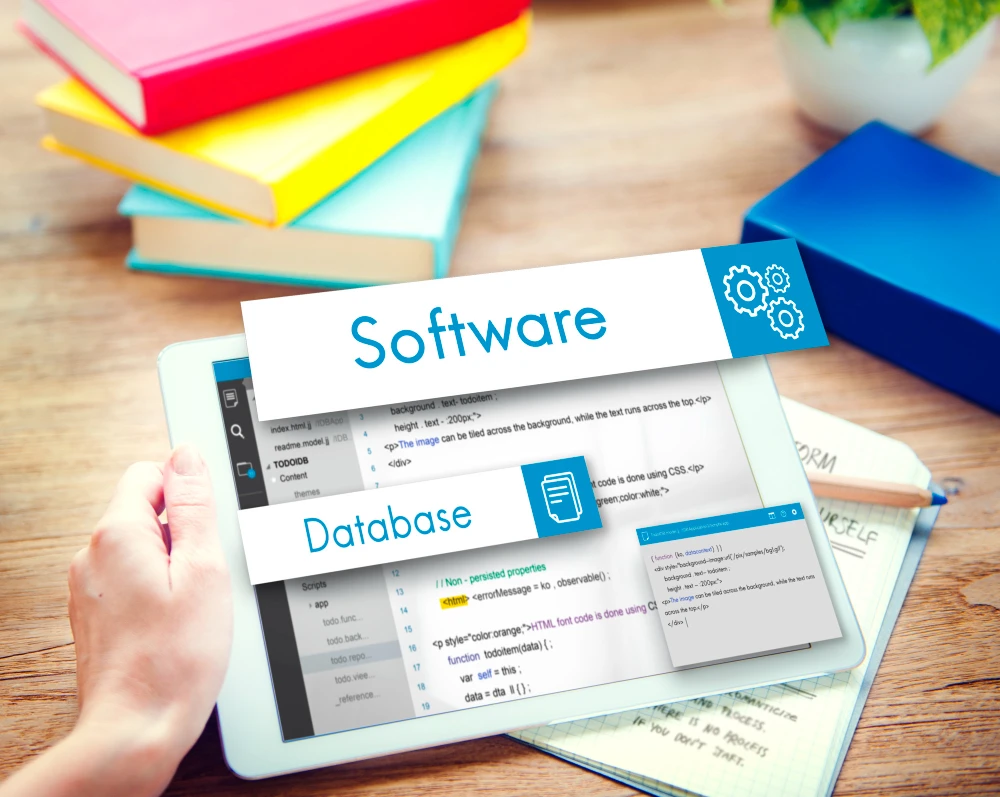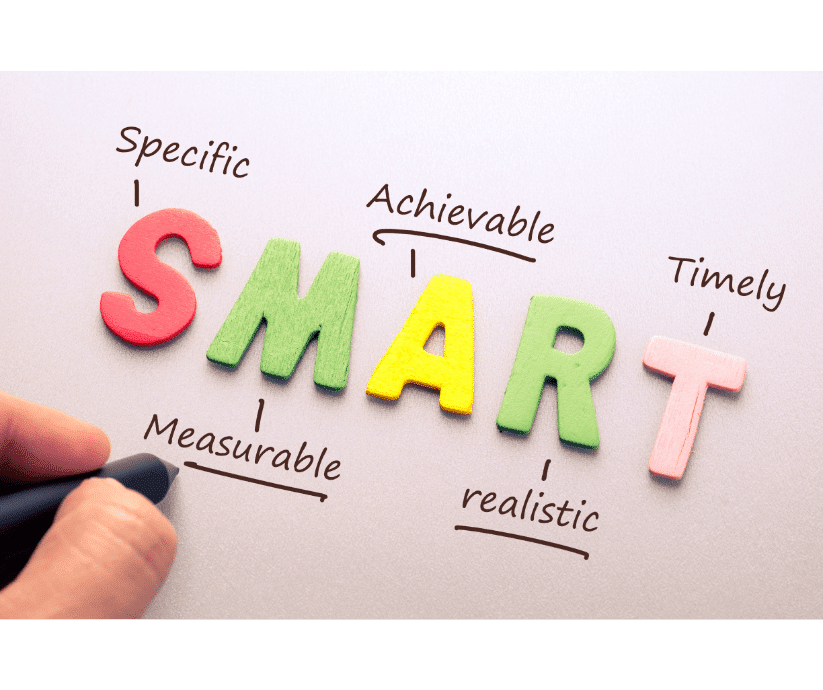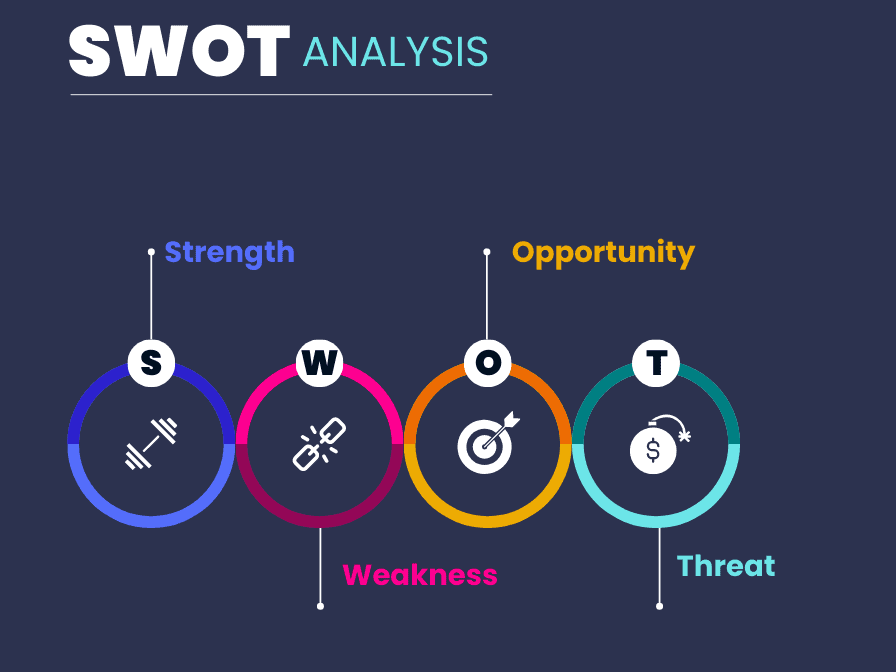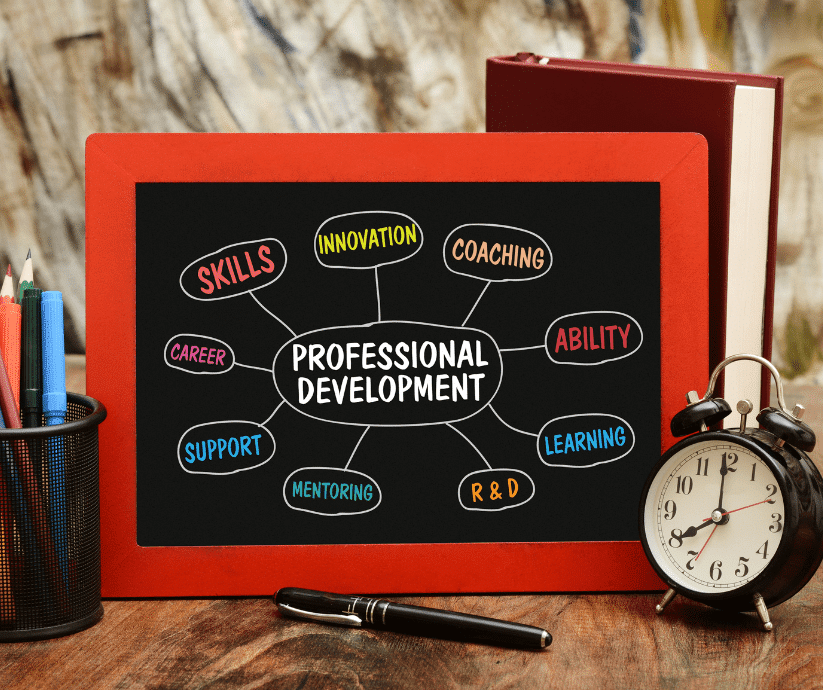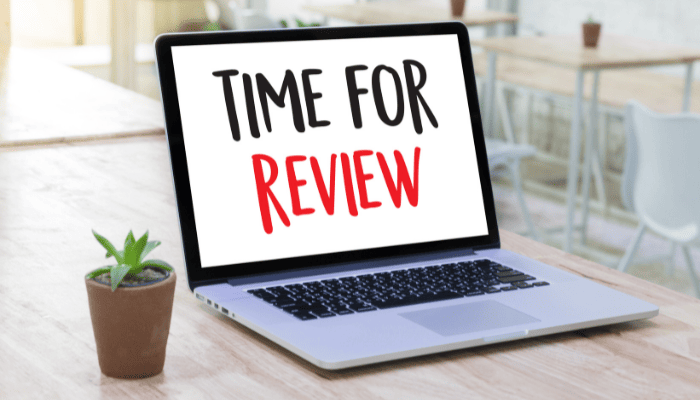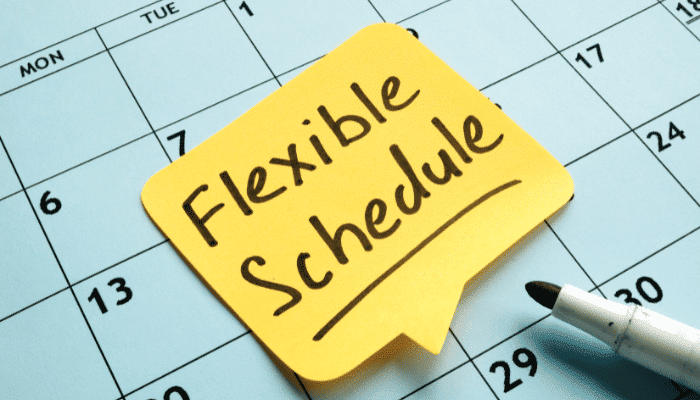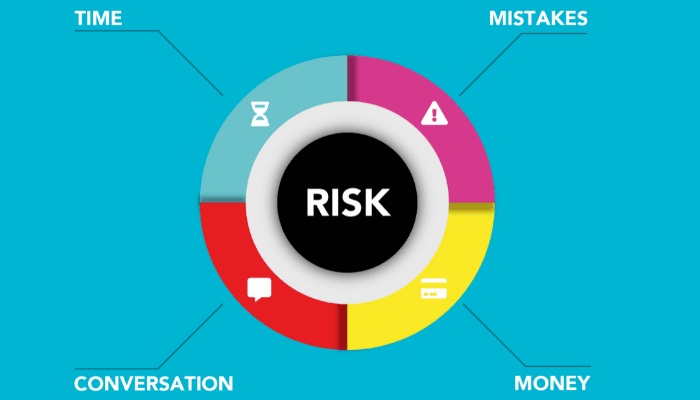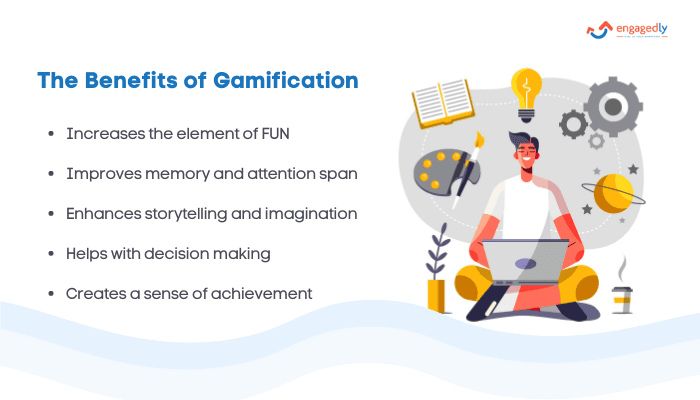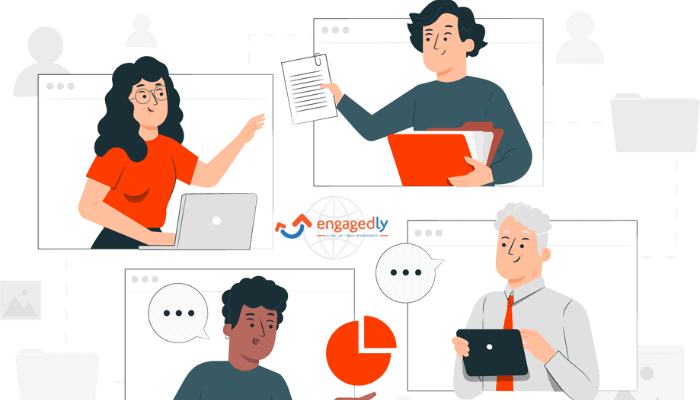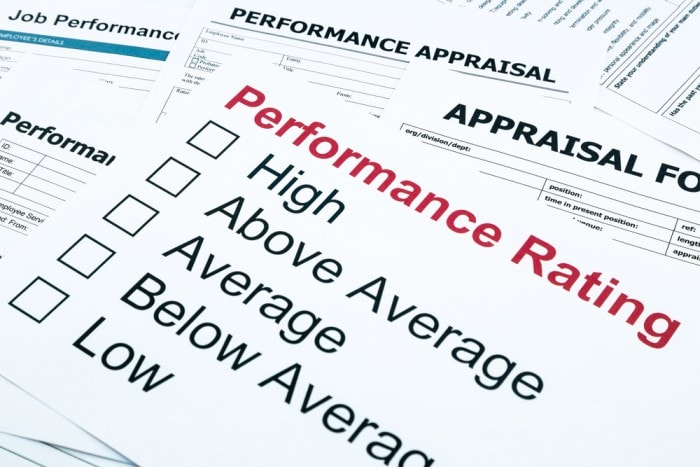What is Gamification?
Gamification means using game-like elements to reward participation and activity to produce desired results. Point scoring, rewards, and other gameplay components are used for tasks like a staff engagement program or an internet marketing initiative.
Gamification can be used in several aspects of a business. It can be applied to marketing, sales, and HR to achieve desired objectives. For instance, gamification strategies can encourage staff to perform tasks that result in better sales, leads, and successful interaction with potential customers.
According to research, 90% of workers feel that gamification increases their productivity at work. It also shows that average employee engagement rises by 48% in a gamified work environment.
Also Read: 5Employee Engagement Statistics You Should Be Aware of in 2023
How to Gamify KPIs
-
Hold Contests
Contests stimulate productivity and create a positive, healthy work culture, promoting a sense of friendly competition. When employees are motivated to participate in contests, their performance improves. While holding contests, you should remember that the contests must align with the objectives that you wish to accomplish. Moreover, they should be relevant and achievable to be fun and engaging; otherwise, employee engagement would drop quickly.
-
Recognize and Reward
Gamification of KPIs also involves recognizing and rewarding the employees who perform well in the contests. Consider introducing a rewards system to complement the competition strategy.
One way to achieve this is by establishing a points-based system for teams, whereby they are awarded a particular number of points each time they achieve a goal. Employees can exchange these points for a gift or a bonus.
-
Offer Feedback
Feedback is an important part of continuous improvement. Employees should receive constructive feedback for their performance in contests and tasks. It can let them know what they can do better to move up in the competition.
You can make the feedback procedure more enjoyable by transforming it into a game-like experience. You can name it a ‘Quest for Improvement’, for example, and the employees have to gather feedback and list some ways they can improve as they progress through the game. This will increase the likelihood of improvement on the part of employees, as they are more likely to be receptive to such forms of feedback.
-
Introduce Updates
Outdated gamification methods may gradually lose their effectiveness, much like any game that fails to adapt and evolve. To sustain employee engagement and motivation, managers should actively seek to keep the gamification experience interesting. This entails regularly introducing fresh updates such as new challenges, innovative scoring methods, enticing prizes, and additional game elements. By consistently injecting novelty into the gaming experience, managers can effectively preserve the efficacy of gamification, ensuring it remains a vibrant and engaging tool for employee motivation.
-
Personalize
Allow users in the gamified system the flexibility to customize their avatars, themes, or other components. While certain badges, such as progress badges, remain system-wide, others, like performance badges, benefit from personalization.
Incorporating personalized graphics and including the employee’s name to express gratitude for their work adds a personal touch, fostering increased employee loyalty toward the organization.
Gamification KPIs
The primary goal of gamification KPIs is to make reaching targets more enjoyable, rewarding, and effective. Following are some common gamification KPIs that you should keep track of:
-
Points, Badges, and Leaderboards
Giving points for completing activities or hitting KPI targets gives employees a concrete way to gauge their progress and success. Badges serve as tangible rewards that heighten feelings of accomplishment. Participants work to increase their point totals and badge collections, encouraging healthy competition and enhancing performance.
This gamified strategy can foster a sense of fun and offer incentives for achieving goals. The badges may take the form of several appealing aesthetic components. In the long run, this can improve retention and employee engagement.
Implementing a performance leaderboard is another effective strategy. This feature tracks and ranks employees or teams/departments based on their performance. It serves as motivation for other employees to strive for higher rankings, fostering healthy competition and engagement.
-
Difficulty Milestones
An important KPI is measuring the progress of your employees. You can do this by keeping track of the difficulty of the tasks your employee is doing. This data can give you useful insight into the growth level of your employees. You can also use these insights to modify the difficulty level for each employee based on their performance.
You can set additional benefits and rewards for employees who consistently clear a set number of difficulty levels without fail to keep them motivated.
-
Timely Completion of Tasks
To accomplish particular KPIs within a specified timeframe, set time-based challenges. The need to meet deadlines can motivate participants to work harder. Additionally, the emphasis on timely completion encourages time management and punctuality within the organization while streamlining processes and ensuring easier workflows.
-
Task Success Rate
The task success rate, a vital KPI measured through gamification, offers insights into employee productivity by calculating the percentage of completed tasks out of the total assigned.
Consider an employee with ten tasks; achieving eight results in an 80% success rate. By incorporating this metric into the leaderboard, employees are motivated to enhance their success rates, fostering continuous improvement.
-
Feedback Corner
The feedback corner is a crucial part of the gamification method that tells employees what they can do better to improve their performance. Employees must receive the feedback well, in clear terms. This encourages a culture of open dialogue, teamwork, and constant development, advancing business goals.
Also Read: The Growing Trend of Gamification in HR
Impact of Gamification on Employee Engagement
The main purpose of gamification is to improve the engagement rate in an organization. Research has shown that a good engagement rate can increase profits and customer satisfaction. Employers can increase employee engagement through rewards, recognition, interesting tasks, and a fun interactive interface.
A big plus that gamification brings here is a new, innovative way of doing things. It breaks the monotony of routine work, making it more enjoyable. This keeps employees hooked on their tasks and, thus, increases productivity and engagement.
Finally, visually appealing elements, time-offs, and other real-time rewards in exchange for the collected points and badges drive employee engagement enhanced by gamification.
Benefits of KPI Gamification
- One of the key advantages of KPI gamification is the use of data to make informed decisions. Data from leaderboards can provide employers with valuable insights into employee performance.
- A direct benefit of gamification is a fun-filled atmosphere at work, which promotes healthy competition and boosts productivity.
- With gamification, you can gradually build a high-performance culture in your workplace.
- Employee engagement and motivation are also improved as a result of KPI gamification. It also boosts employee morale by providing them with rewards and recognition.
- Learning and training programs can become more efficient through gamification contests and leaderboards. This way, it focuses on knowledge transfer and skill development.
- Team-based gamification can enhance employee collaboration and cooperation.
- Employees can improve their skills through the challenges and learning opportunities frequently included in gamification.
- The feedback feature in gamification motivates employees to strive for improvement and put in more effort.
Summing Up
The gamification of Key Performance Indicators (KPIs) integrates game elements to enhance the engagement and appeal of reaching targets. By incorporating gamification into KPI tracking, the process of achieving goals becomes not only more enjoyable but also more attainable. Essential gamified KPIs to monitor encompass metrics such as task success rate and the timely completion of assignments, among others. Utilizing gamification in KPI management not only adds a layer of enjoyment to the tracking process but also contributes to a more dynamic and motivated work environment.
Frequently Asked Questions
Q1. How can we gamify HR targets and processes?
Game-like elements can be introduced in HR processes like onboarding by providing new hires with an interactive journey that guides them through company policies, culture, and training. This can help them feel more engaged and connected to the organization from the start. Other gameplay elements, such as quizzes, can be used in training processes to ensure knowledge transfer to the job.
Q2. What are gamification programs?
Gamification programs are initiatives that integrate game-like elements, such as scoring, rewards, and competition, into non-game contexts, like business processes or employee engagement strategies. They aim to enhance motivation, participation, and performance by leveraging the engaging aspects of games.
Q3. Is there a downside to gamification?
While gamification can be effective, poorly designed implementations may cause employee confusion and a rapid decline in engagement. Additionally, the ongoing need for updates to maintain interest can contribute to high development costs.

 Hold Contests
Hold Contests
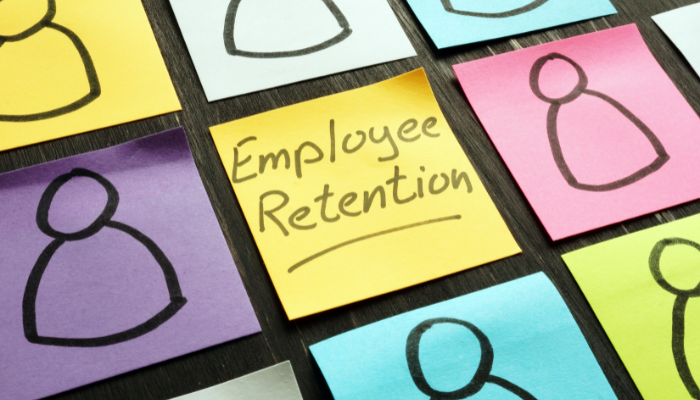 Understanding and enhancing an organization’s employee retention rate holds paramount importance for several compelling reasons:
Understanding and enhancing an organization’s employee retention rate holds paramount importance for several compelling reasons:














